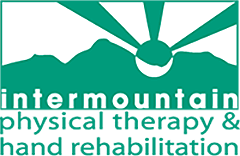
August 2017: An Introduction to the Pose Running Method
A few weekends ago, I had the pleasure of attending an introductory course to the Pose
Method of running, led by Albert Lu. I was joined by my sister (an interested runner), and a local
Crossfit gym owner/coach. The entire introductory course took approximately 2.5 hours, and
both started and ended with Albert analyzing the group’s running patterns. Before going over my
personal experience and perspective on the clinic, a short review of the Pose Method may be
helpful.
Originating from the mind of Dr. Nicholas Romanov, the Post Method was developed in
1977 to allow runners to go further, run faster, and hurt less. Dr. Romanov, an exercise
physiologist, analyzed the running form of hundreds of elite runners in the late 1970’s. After
analyzing their patterns, he summarized their movement into three main phases: the pose, the
fall, and the pull, thus forming the basis for the Pose Method.
The pose is the specific bodily position one must take prior to the fall, which is
essentially allowing gravity to move the body forward in space, and lastly the pull, which gets
the runner back into the first initial pose position. It’s that easy, right? Just assume the pose, let
your body “fall” forward, and resume the initial position with the “pull” movement. Wrong. This
alteration of bodily position whilst properly controlling the right amount of forward fall proved to
be quite difficult. See below for the three phases of the Pose Method for running.

My immediate feeling after trying a few laps was one of hesitation. The Pose Method felt
quite unnatural, and in a lot of ways, made me expend a greater amount energy compared to
my default running method. So how could a running method that so unnatural allow me to run
faster, longer and stay injury free? Albert explained it all came down to the pull.
The vast majority of runners are “pushers”, meaning they rely on a primary pushing force
to propel themselves forward in space and cover a distance on ground. Constant reliance on
this push requires a greater amount of energy, which fatigues us sooner, thus bringing a greater
potential for injury via overuse, etc. However, when we trade in our pushing strategy for a
pulling one, we activate different muscles and in combination with the fall phase, we remain
upright during running. Remaining upright, as opposed to continuously leaning forward, helps to
conserve energy through less muscle activity. In other words, I just assume the pose and let
gravity do the rest. Clear as mud? I thought so too, until I started performing some of Albert’s
pre-running drills. The drills helped to reinforce all the things I was concentrating too hard on,
and similar to a staircase, allowed me to arrive at a better vantage point step-by-step.
Overall, I enjoyed the clinic and thought it provided a unique perspective on movement
related to running form. Am I ready to apply the Pose Method of running to my next race? Not
exactly, because like any new skill, it must be practiced heavily prior to its mastery. If you’re
interested in learning a new technique for running, give Albert’s program a try. This review is
just an introduction, just as the clinic was meant to be, and thus further time is needed to both
learn and effectively apply the Pose Method.
